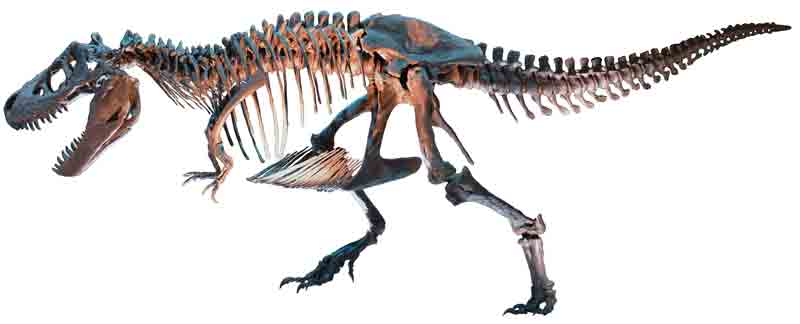Fossil Dinosaur Tooth mm 19 x 13 x 8 T-rex Tyrannosaurus rex Theropod Bipedal Carnivore Extinct Reptiles Mesozoic Cretaceous Collecting Paleontology Museum.
Distal end, a very beautiful priceless high quality fossil specimen detailed, nice girth, serration present and good great enamel.
No restoration at all. Only a piece, with free clip-on frame, as in photos.
Tyrannosaurus (Saurischia, Theropoda, Carnosauria, Tyrannosauridae) is a genus of carnivorous biped dinosaur lived in the Upper Cretaceous, about 68-66 million years ago (Maastrichtian) in North America, which at that time was an isolated continent named Laramidia. Tyrannosaurus was much more geographically widespread than other tyrannosaurids. It was one of the last living dinosaur species when the mass extinction of the Cretaceous-Paleocene occurred, which determined the disappearance of the dinosaurs proper.
The scientific name of the tyrannosaur is due to HF Osborn and refers in both parts of an idea of domination: Tyrannosaurus is the synthesis of the Greek τυραννος (tyrannos: "lord, sovereign, tyrant") and σαυρος (sauros: "lizard") ; rex is the Latin for "re". In summary: king tyrannus lizard. T-rex is an abbreviation of common use in science and beyond.
The genus Tyrannosaurus belongs to the subfamily of tyrannosaurins (Tyrannosaurinae). Currently, 12 species belong to this subfamily. The largest specimens could reach 12 meters. in length and a maximum weight of about 9 tons.
Like the other tyrannosaurids, he had a large, massive skull, balanced by a long, heavy half-ton tail. Compared to its sturdy legs, Tyrannosaurus front limbs were short but relatively powerful and provided with two clawed fingers. Many of the bones were hollow, explained as a lightening of the animal without loss of physical strength. Although there were theropods that exceeded magnitude (such as Spinosaurus, Giganotosaurus, and Carcharodontosaurus), Tyrannosaurus was the largest of the

tyrannosaurids and one of the largest known and greatest terrestrial predators. Some paleontologists have speculated that T. rex was a predator at the apex of the food pyramid of the time, feeding on adrosaurs, ceratopsides, ankylosaurs and probably also sauropods; others, however, have proposed that the animal was a scavenger scavenger. The question is the subject of a long debate in palaeontology, in which most paleontologists believe that Tyrannosaurus was an opportunistic carnivore, that is, that it fed both live prey and carcasses of dead animals. It is estimated that it was equipped with one of the strongest jaws in the animal kingdom, which could exercise a bite of about 3.6 tons (twice the crocodiles) while the tapered teeth could exert a good 195 tons of force.
Thanks to this ability '' the T rex probably managed to exploit more the carcasses of the great horned dinosaurs and the duck-billed dinosaurs, whose bones were rich in mineral salts and marrow.
The T. rex mouth had 30 teeth in the upper arch and 28 in the lower one, characterized by a high heterodontic (shape difference). In general they have an oval cross section and have a finely serrated edge. The upper premaxels, however, are close together and have a D section. The remaining teeth were sturdier, more spaced and with reinforcing ribs, bent backwards with an overall banana shape that prevented them from breaking during the bite and while they tore meat. The size of the teeth could range from 10 to 30 cm in length, including the root; they were therefore the largest of the carnivorous dinosaurs. The lack of wear that often occurs in the dentition is due to the fact that the theropods quickly replaced damaged teeth.
More than 50 fossils of Tyrannosaurus have been found, including several almost

complete skeletons. At least one of these specimens preserves traces of soft tissue and proteins. The abundance of artifacts (Saskatchewan, Texas, Wyoming, Alberta, Montana, Colorado, Dakota and New Mexico) has made possible detailed research on the aspects of Tyrannosaurus biology, including those related to biomechanics and its growth. On the other hand, his hunting behavior, his degree of intelligence, his physiology, such as the presence or absence of a plumage, the possible thermoregulation, sexual dimorphism (the females would be bigger) and other details of life are still objects of debate. as its maximum speed during a race. Its taxonomy is also the subject of controversy, since some scholars consider Tarbosaurus bataar, found in Asia, a second species of Tyrannosaurus, while others classify it as a separate genus. Other genera of North American tyrannosaurids, described at the time of their discovery as new taxa, have subsequently been synonymous with Tyrannosaurus.
Until a few decades ago tyrannosaurs were believed to have evolved from primitive teropods such as megalosaurs, but currently the most accredited theory holds that the animal has evolved from a species belonging to the group of celurosaurs.
There is evidence that Tyrannosaurus had Asian origins, in fact it is closely related to Asian tyrannosaurids such as Tarbosaurus and Zhuchengtyrannus. The arrival of the Tyrannosaurus in North America, about 67 million years ago when a land bridge joined the two continents, coincides, moreover, with the gradual extinction of the native American tyrannosaurids as Albertosaurus and Gorgosaurus. Tyrannosaurus is thought to have played a major role in their extinction, ousting old predators and climbing the top of the food chain, like a veritable invasive or alien species.
Other famous components of the subfamily of tyrannosaurins are, besides the already mentioned above: Daspletosaurus, Alioramus and the genus Nanotyrannus, which is subject to discussions among paleontologists if it is considered a separate species or a juvenile form of Tyrannosaurus. Nevertheless, the two genera show small differences, such as the highest number of teeth in Nanotyrannus, leading some scientists to recommend the continued separation of the two until further discoveries make the situation clear.



